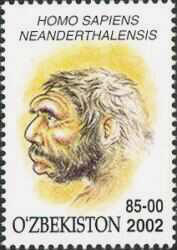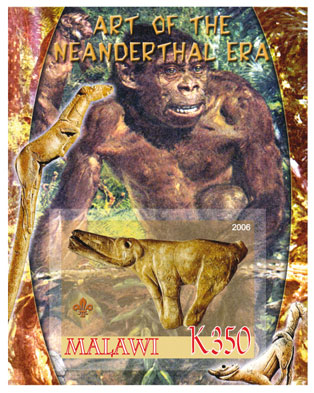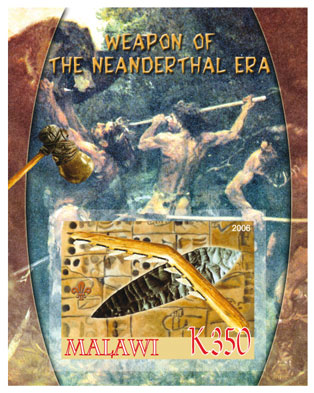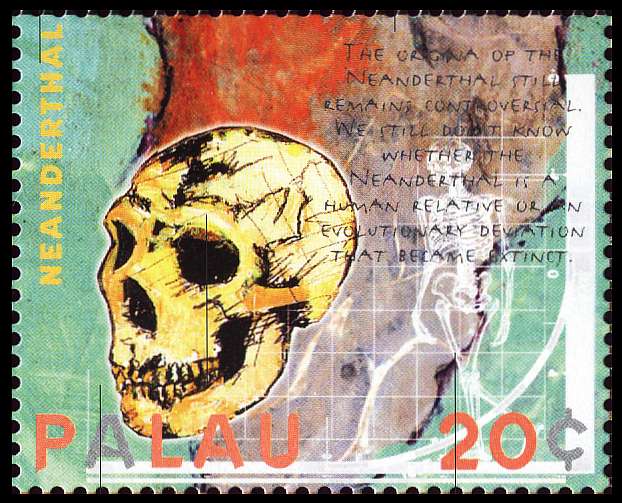Homo neanderthalensis
Homo sapiens neanderthalensis (King, 1864)
The discovery in 1856 of a skullcap and partial skeleton in a cave in the Neander valley near Dusseldorf, Germany, signaled the first recognized fossil human form. While it was later realized that several Neanderthal sites had previously been discovered, their remains were not recognized as those of an archaic form of human until the discovery of "Neanderthal Man." In 1864 a new species was recognized: Homo neanderthalensis.
Neanderthals inhabited Europe and western Asia during the latter part of the Pleistocene. The climate in these regions was much colder than it is today, and several glaciations, or Ice Ages, are known to have occurred during the time of Neanderthal occupation. Neanderthal localities are known today from Spain to Uzbekistan (near Afghanistan). Several important sites in the vicinity of Qafzeh Cave, Israel, suggest that Neanderthals arrived in the region after modern Homo sapiens. This would indicate that the population of modern humans in this area was not descended form Neanderthals, and that there was some period of coexistence, or an alternating series of migrations into this region by the two species. Neanderthals are known from Europe and western Asia from about 200,000 years to about 30,000 years ago, when they disappeared from the fossil record and were replaced in Europe by anatomically modern forms.
The original interpretation of Neanderthal anatomy was one of a primitive early human based on a flawed reconstruction of the nearly complete skeleton of an elderly Neanderthal male found at La Chapelle-aux-Saints, France (second photograph from the top). However, Neanderthals and modern humans (Homo sapiens) are very similar anatomically - so similar, in fact, that in 1964, it was proposed that Neanderthals are not even a separate species from modern humans, but that the two forms represent two subspecies: Homo sapiens neanderthalensis and Homo sapiens sapiens. This classification was popular through the 1970's and 80's, although many authors today have returned to the previous two-species hypothesis. Either way, Neanderthals represent a very close evolutionary relative of modern humans.
![]()
Cambodja

Jersey
Malawi
Niuafo-ou

Palau
Tonga








